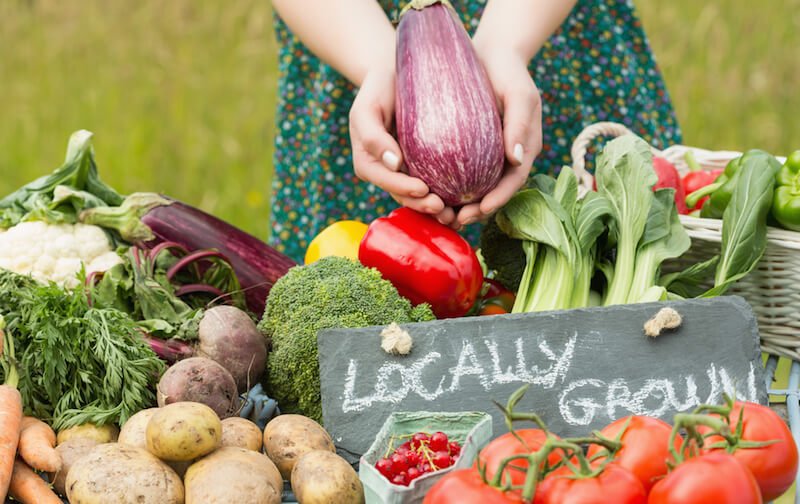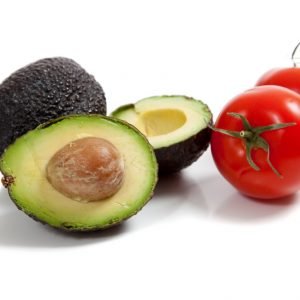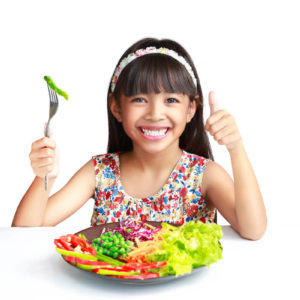Eating sustainable, earth-friendly food seems like the responsible thing to do, but like so many things, it is easier said than done. Although a complete lifestyle revamp may be your end goal, starting small will help you stick to your resolve and lay a foundation of success for you to build on. These five actions can help get you on your way to a diet that is better for the earth, better for animals and better for you.
5 Ways to Support Sustainable Food Production
Make One Change
Whether you decide to adopt Meatless Monday or do all your produce shopping at the local farmers’ market, committing to one concrete change can make a world of difference. Other small but mighty changes include making your own baby food, switching to plant milk and avoiding eggs. Eliminating specific animal products, such as eggs and dairy products, from your diet decreases your reliance on factory farming. It can also lower your overall fat and cholesterol intake.
Use Less
If there is a certain non-earth-friendly food that you cannot seem to live without, consider cutting back instead of totally eliminating it from your diet. Your goal should be improvement, not perfection. You could reserve one day each week or month to indulge in that particular food, or replace it with a more sustainable choice half the time. If you only like to drink cows’ milk, for example, replace it with plant milk in cooking but invest in high-quality, responsibly-produced dairy milk for drinking.
Check the Label
If you want to find out where your food comes from and how it was produced or raised, examine the label. Although labeling practices are not always consistent and can be confusing, there are a few basics you should know:
Organic
This is possibly the most familiar label in the world of eco-friendly food. In the U.S., the United States Department of Agriculture (USDA) sets the standard for what can be considered organic, based on limited use of chemicals, hormones, pesticides, and the like. However, animals raised and sold as organic meat are not required to have outdoor access or a specific amount of living space.
Pastured
Meat can be labelled as coming from pastured animals without being verified by an independent agency. Therefore, this may not be a reliable designation, but in general, it means that the animal was raised on pasture as opposed to in a feedlot.
Integrated Pest Management (IPM)
This wording means that pesticides are used along with alternative methods of controlling pests, and only as a last resort.
Fair Trade
The Fair Trade Certification can apply to all kinds of products, not just to food. Fair Trade has more to do with economic sustainability in categories such as workers’ wages and working conditions than with the food itself.
You will see all kinds of other labels during a single trip to the grocery store, from Free Range to Heirloom to All Natural. Many of these labels do not carry a lot of weight from a sustainability standpoint, either because the criteria for the label is minimal or inconsistent, or because no verification is required. Be sure you understand exactly what any given label means before using it as a purchasing guide.
Grow Your Own
There is no better way to ensure you know where your food comes from than to grow it yourself. When you create a backyard vegetable garden, you control what plants are grown, what pest-management methods are employed, and when each item will be harvested. Gardening does take some planning, persistence, and elbow grease, but it is not as mysterious as some people would have you believe.
If you do not think you have enough space for a traditional garden, consider some space-saving options. You could create a container garden on a porch or balcony, or in a sunny kitchen window. This is an excellent method of growing tomatoes, strawberries, and herbs. If you have a sunny wall that you could dedicate to growing food, try a vertical garden.
If you do have a nice big yard, but your soil is not in the best condition, raised beds are a good option. Building frames above-ground and adding your gardening soil on top of your existing dirt and grass means you can get started right away, instead of spending the first season amending your soil.
Learn to Cook
Now that you have those lovely vegetables growing in your garden, it’s time to figure out how to prepare them. Learning to cook your own food is perhaps the most effective way of making the switch to sustainable foods a reality. Don’t have time for a cooking class, or don’t have access to the appropriate cookbooks? No problem. The Internet is full of simple, easy-to-follow recipes. For example, JustRecipes Hamptoncreek on YouTube features many quick, visual recipes for dips, sauces, side dishes, and main courses based on fresh ingredients and an egg-free mayo product.
Sustainable food choices are not only for the rich and famous. With a few earth-conscious changes, you can be on your way to making better selections for yourself and for your world.









Leave a Reply